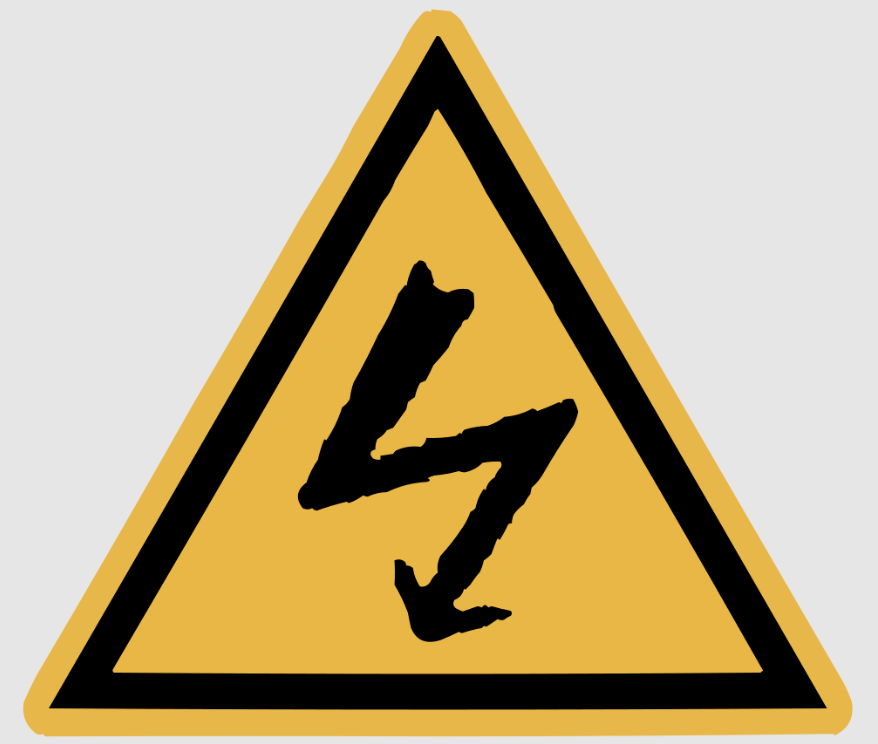Electricity! We all know it’s dangerous and even more so when combined with water, yet often aquarists practice relaxed and sometimes downright dangerous approaches when combining the two. I was among the worst, having a few minor shocks and the occasional stray voltage from a failing piece of equipment. That all changed when I nearly died.
Three years ago, I was doing routine fragging. As a commercial coral farmer, I wear disposable gloves when working with corals. These protect me from all sorts of pokey critters and keep the super glue off my hands. The downside is gloves can fill with water like a balloon. I needed to grab something from the office. With gloves still on I popped into the office and leaned my arm against the wall, highly conductive saltwater sliding from my glove, down the wall, and directly into an electrical outlet.
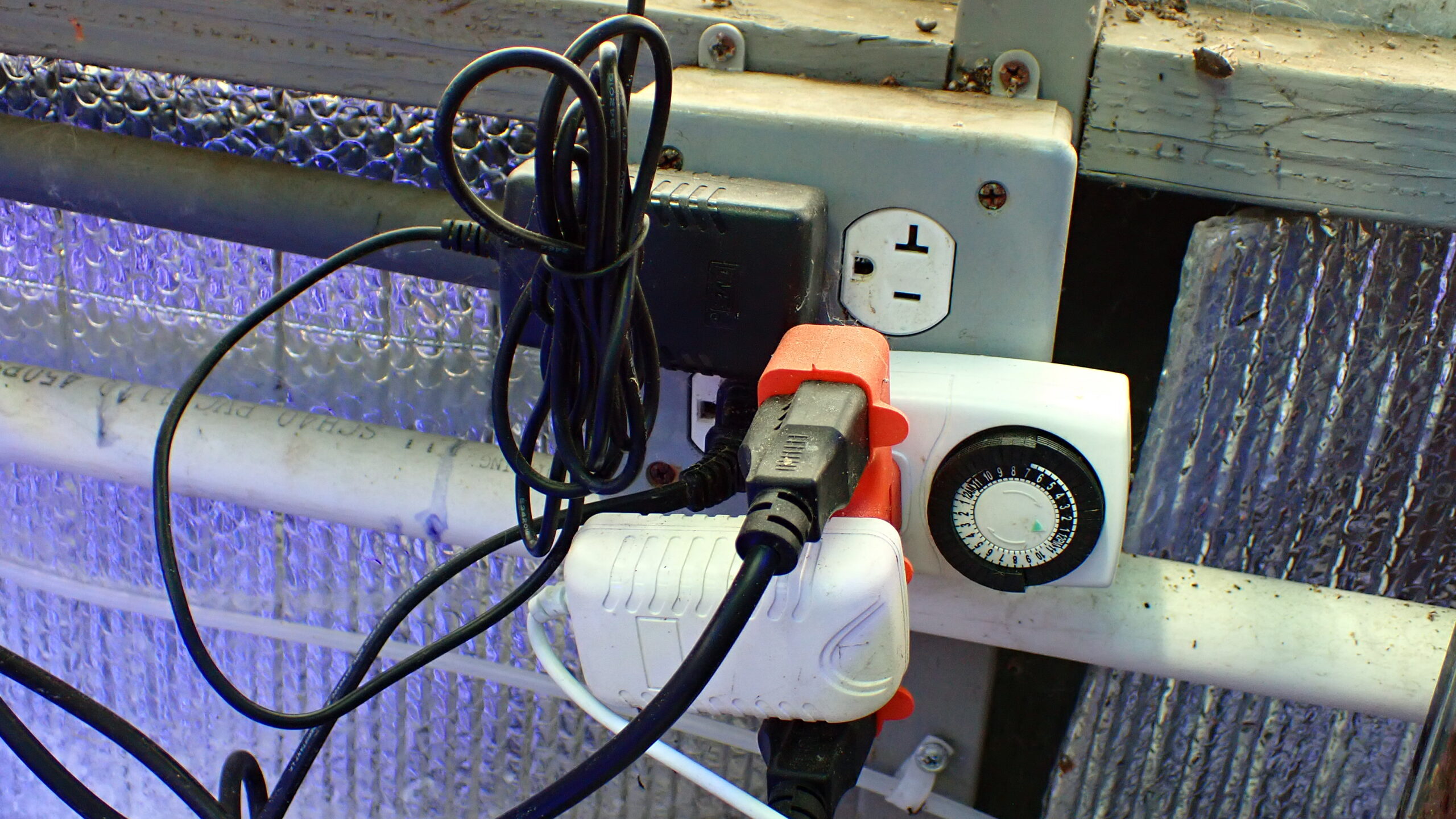
I felt an instant surge of energy through my body. I spasmed as it went through my arm, down my chest, and into the ground through my leg. The next thing I know I open my eyes and I’m on the floor, I still have no clue if I was down for 5 seconds or five minutes but when I tried to stand, I collapsed, and my legs wouldn’t work. Shakily I got up and assessed the situation thinking I was fine. Within a minute, I felt intense pressure in my chest, and it became difficult to breathe. I could feel my heart struggling, the rhythm was off. Focusing on breathing, I attempted to call 911. My hands were so shaky it took several attempts to dial the numbers. Long story short, an ambulance came, they checked me out and my wife was terrified. No physical damage but a very close call that served as a wakeup to re-examine all aspects of electrical safety around aquariums.
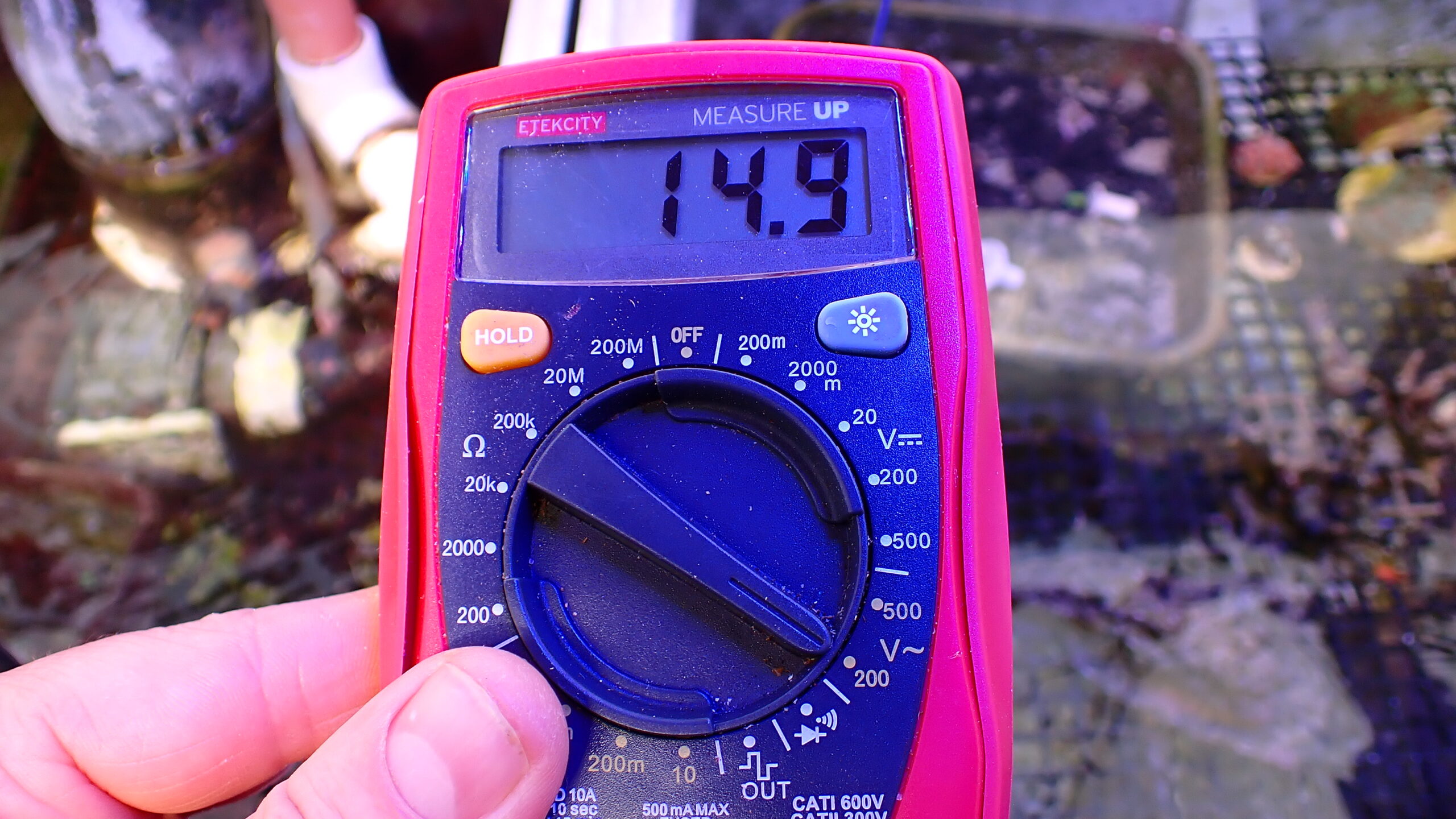
Is household electricity dangerous?
When paramedics arrived, they asked if it was a 110V receptacle (The standard household voltage for The US and Canada) they then laughed and told me 110 Volts can’t kill. I insisted they check me out and could tell they weren’t taking it seriously. At my follow-up appointment, the Doctor took it seriously and when my Lineman friend heard the story, he told me in no uncertain terms how close I was to death.
What the paramedics didn’t know is that amps NOT volts are what kill. As little as 0.007 amps across the heart for 3 seconds can cause death – the standard household circuit is 20 amps. Yes, home electrical systems are dangerous!
In this article, I will review electrical safety and go over common-sense approaches to keeping yourself and others as safe as possible around aquariums. We will start by looking at residential electrical circuits.
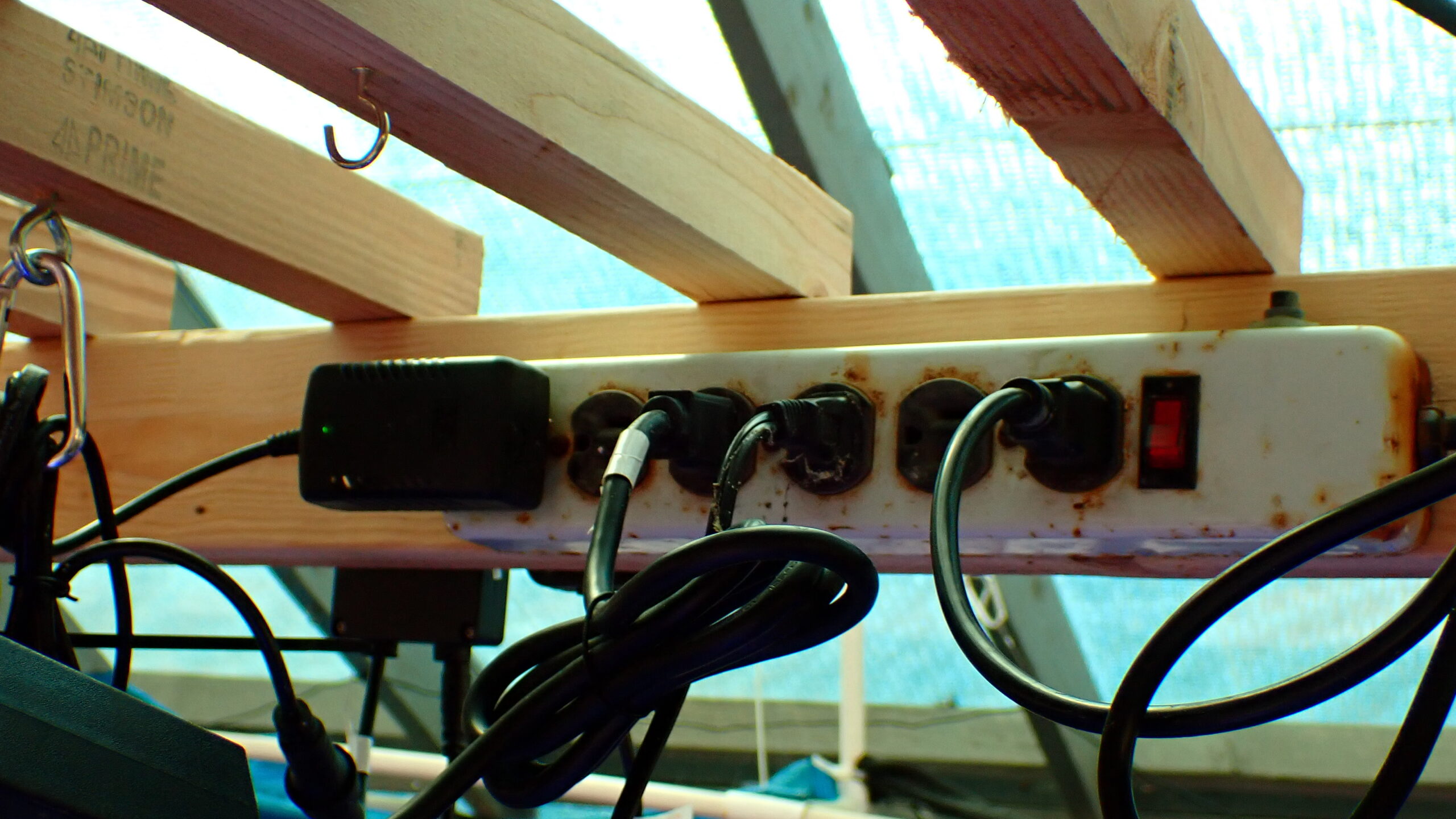
Electric circuits for the home aquarium
Have you ever thought about the outlets your aquarium is plugged into? Probably not, I see a ton of aquariums plugged into standard 3-prong outlets in living rooms, bedrooms, and garages. This is a recipe for disaster as regular outlets will not shut off the electrical supply when a person is shocked. The best way to keep yourself and your family safe in the aquarium is to install GFCI’s for all circuits connected to the aquarium. Better still are GFCI/AFCI breakers installed in the electric panel, these not only measure when current has chosen an alternate path but also when there is an electrical arc in the circuit. When this happens AFCI breakers shut off, lessening the risk of fire. Salt creep near an outlet is a common cause for current to arc and ignite a fire, I have seen it happen.
Looking at national statistics: before the standardization of GFCI outlets in residential settings around 800 people died every year from household electrical accidents. Compare that to now when only around 200 people die per year. Bottom line GFCI’s save lives by shutting off the flow of electricity as soon as a person becomes the path to ground.
For those of you unfamiliar, GFCI outlets, which stands for Ground Fault Circuit Interrupter, are the outlets in kitchens and bathrooms with two buttons in the middle. GFCI’s have an internal sensor that monitors the current flowing through the circuit. In normal operation, current flows consistently through the circuit. However, if there is even a slight difference, such as current diverting through your body, the GFCI shuts the power off saving you from severe shock.
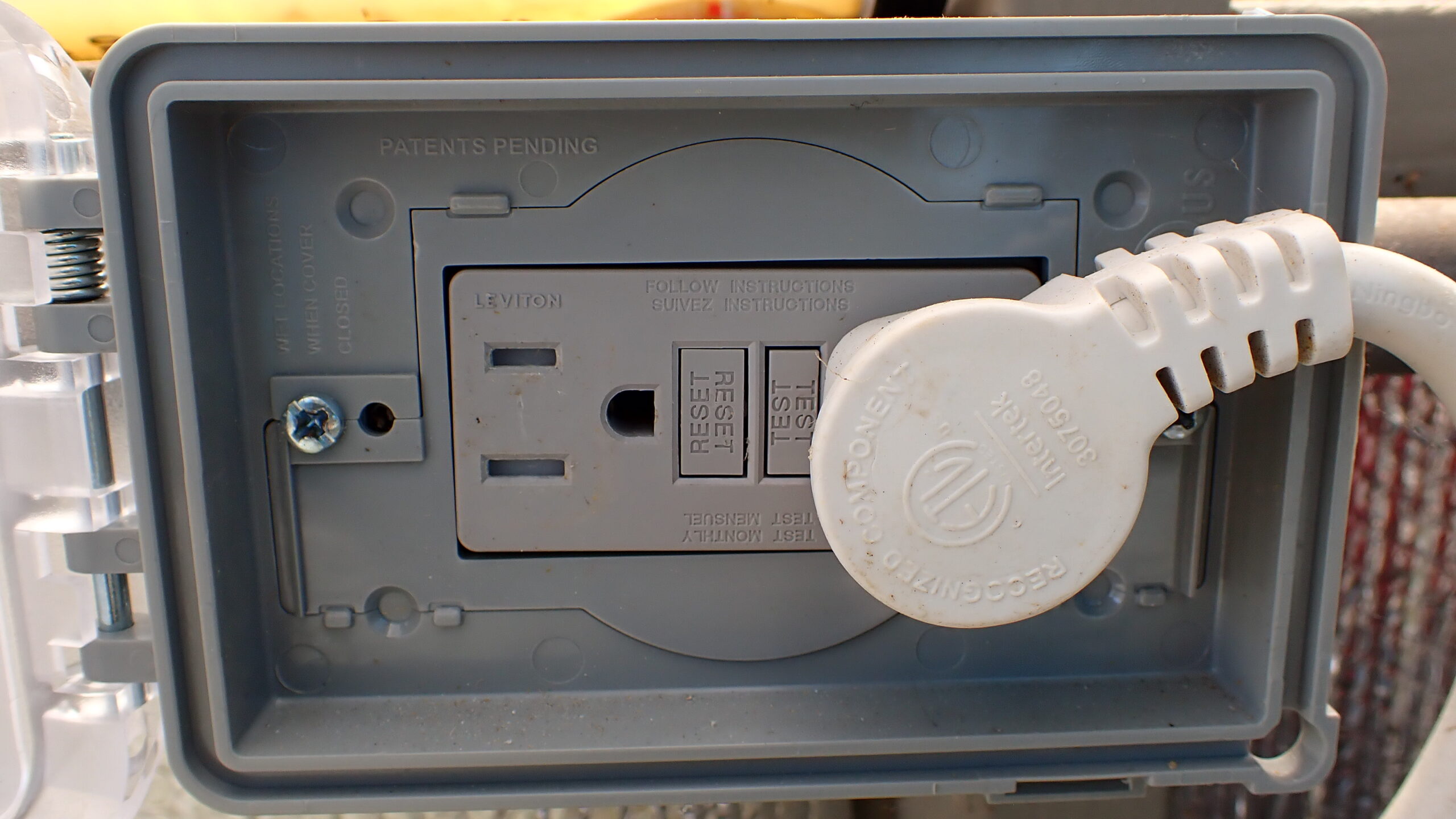
In my decades in the industry, I have seen multiple instances where GFCI outlets have tripped and saved lives. Examples include:
- Loose or dislodged plumbing spraying water on an outlet.
- Cords being plugged in with wet hands cause electricity to pass through a human instead of following the usual route through the circuit.
- Faulty equipment leaking voltage into the aquarium. When this occurs, there will be no warning until the voltage has a path to ground. The human body can act as the path.
If you are thinking about setting up an aquarium, PLEASE install GFCI outlets or breakers before proceeding. For aquariums that are already set up, it is often easier to retrofit a breaker in your panel as outlets may be buried behind stands. For industry professionals, Keep in mind it’s not just you that’s in danger but employees and customers as well.
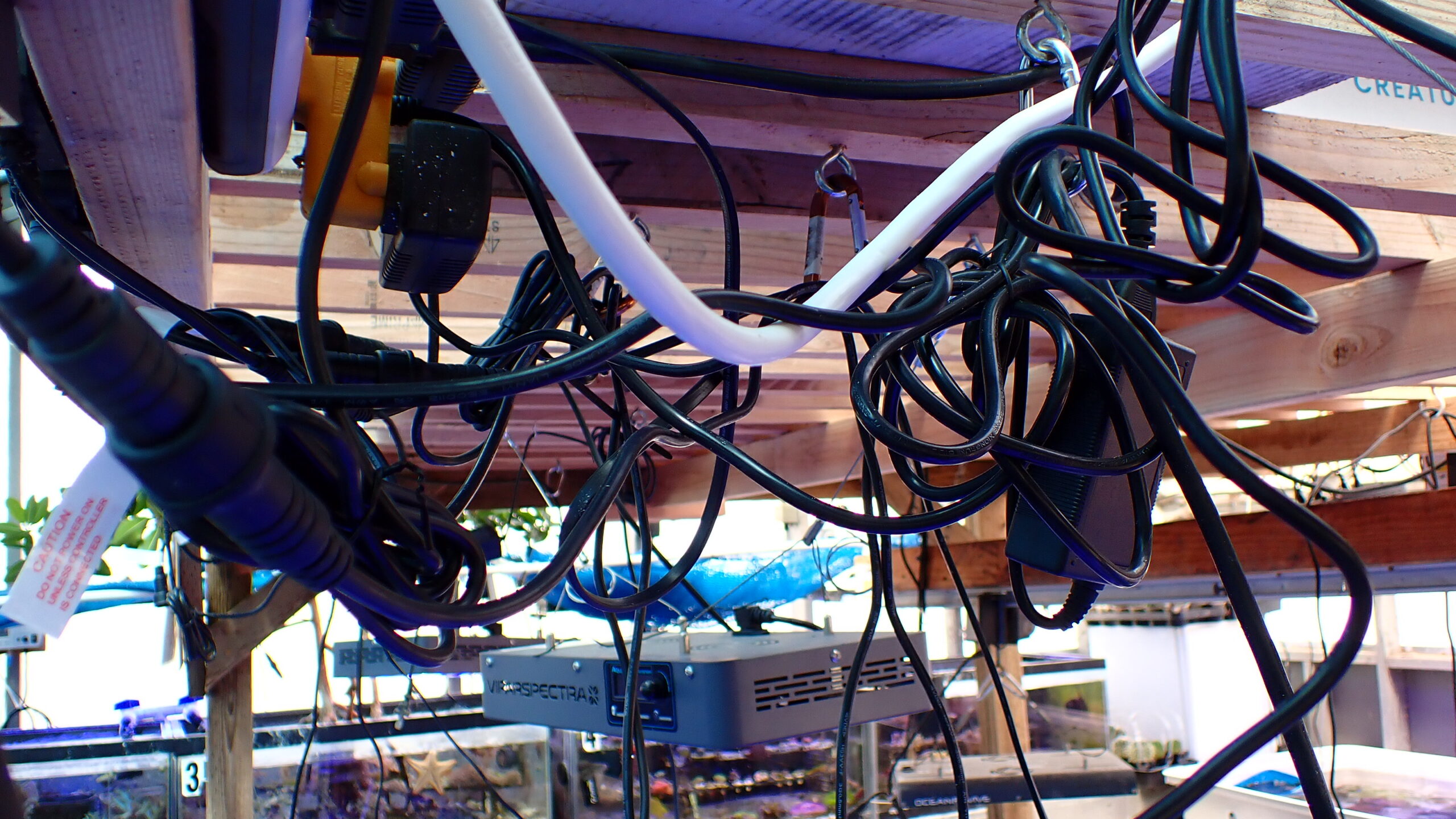
Installing and maintaining aquarium equipment
Next, let’s examine how electrical devices in and around your reef should be installed and maintained. Reef tanks are prone to being over-stuffed with equipment designed to keep the aquarium operating smoothly. It is common to see a dozen or more pieces of equipment running off one single power strip with adaptors and extension cords all within proximity to extremely conductive saltwater. While some of this is unavoidable, below are some best practices to keep you and your home safe:
- POWER STRIPS – These are a must for most aquariums and consideration for placement and proper usage needs to be accounted for. First, proper placement and mounting should be addressed. Make sure your power strip is mounted firmly to a hard surface away from direct contact with water or devices that could splash onto it. Poor placement includes mounting directly over an aquarium and horizontal positioning near the aquarium, such as on the floor. When using power strips note that it is not safe to plug one strip into another. If you need more outlets run a second strip from a wall receptacle.
- DRIP LOOPS – The Drip Loop is a simple way of routing power cords to direct errant water away from the power source. To accomplish a drip loop, plug the power cord in and with the excess cord create a U-shaped curve below the outlet. In the event of water dripping on the cord, the loop will provide a path for the water to safely drip below the outlet and not into it. Always utilize drip loops when applicable.
- AQUARIUM LIGHTING – My recommendation is to make sure that lights are firmly attached to a hard surface and are not simply set on a glass top where they could fall in. Using manufacturer-supplied mounting hardware AND following the manufacturer’s directions is a great way to ensure lighting is installed safely.
- GROUND PROBES – These devices, while hotly debated, can save your life when they are installed properly, this means, plugged directly into a wall outlet on a GFCI-protected circuit. Ground probes provide a path to ground for stray voltage, a fairly common problem in aquariums. Stray voltage is caused when equipment fails and leaks current into the water. For further reading check out the bibliography below.
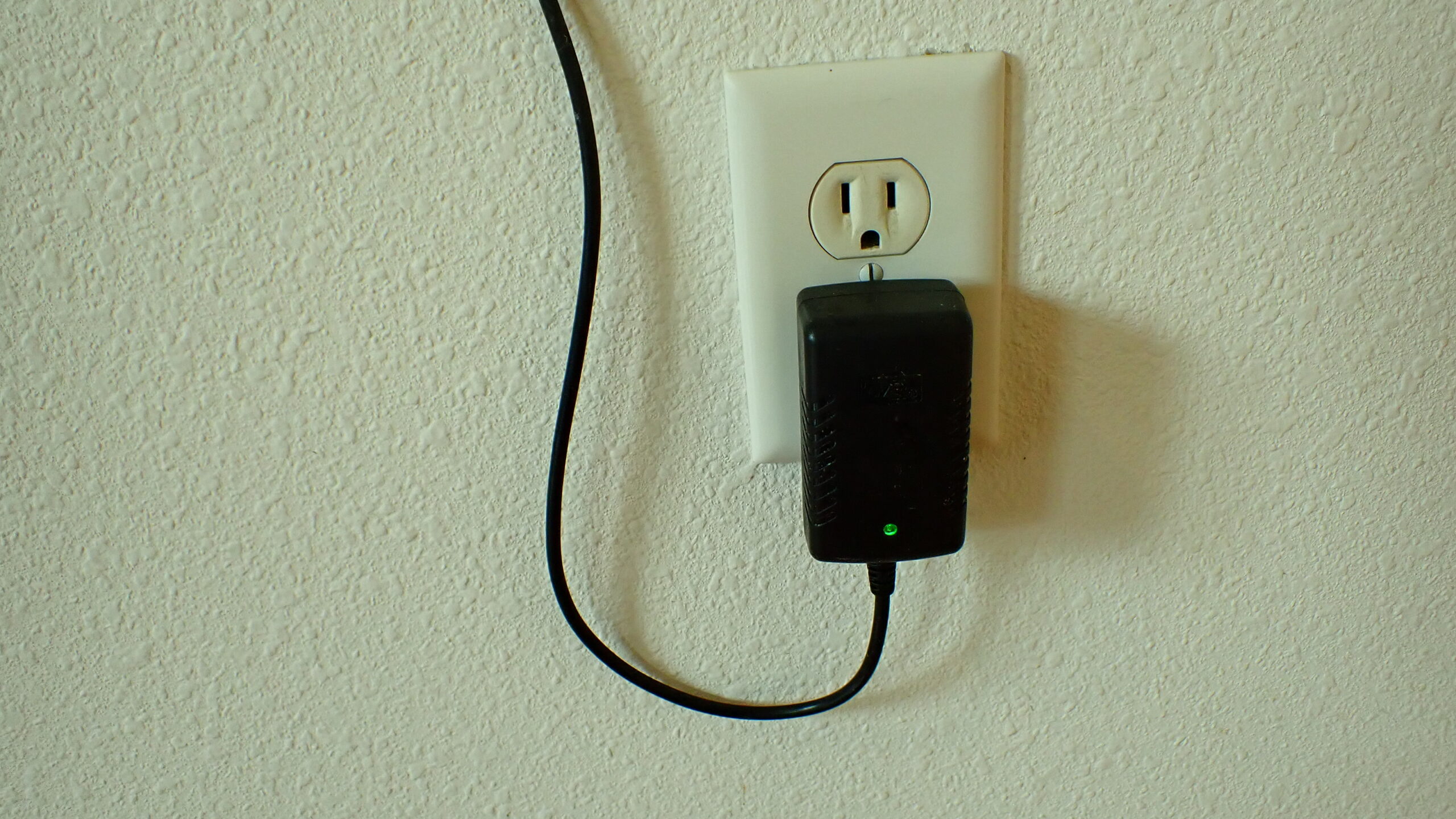
Working in and around your aquarium
The last topic to discuss is working in and around the aquarium while electrical devices are operating. For this I spoke with Erin Powers – owner of All Things Aquarium in Wilsonville, Oregon. Prior to opening his pet store, Erin was an electrician. His big takeaway is always insulate yourself. In his words, this means don’t work on your tank barefooted or in socks but instead wear rubber soled shoes and keep them dry. If they or the floor becomes wet, dry them out before proceeding. When on your knees underneath the aquarium, he suggests knee pads. These practices are designed to keep you insulated from grounding.
Other common mistakes I see when working in the aquarium mostly relate to human error. Watch where the water is going and dry your hands thoroughly before plugging or unplugging equipment. Cleaning salt creep should be part of a regular aquarium maintenance schedule as salt acts as a conductor for electricity increasing shock and fire risk. Finally, remember to unplug pumps and heaters before they run dry. They are designed to operate submerged and can overheat when they are operated dry, this can cause protective seals to break creating a shock risk.
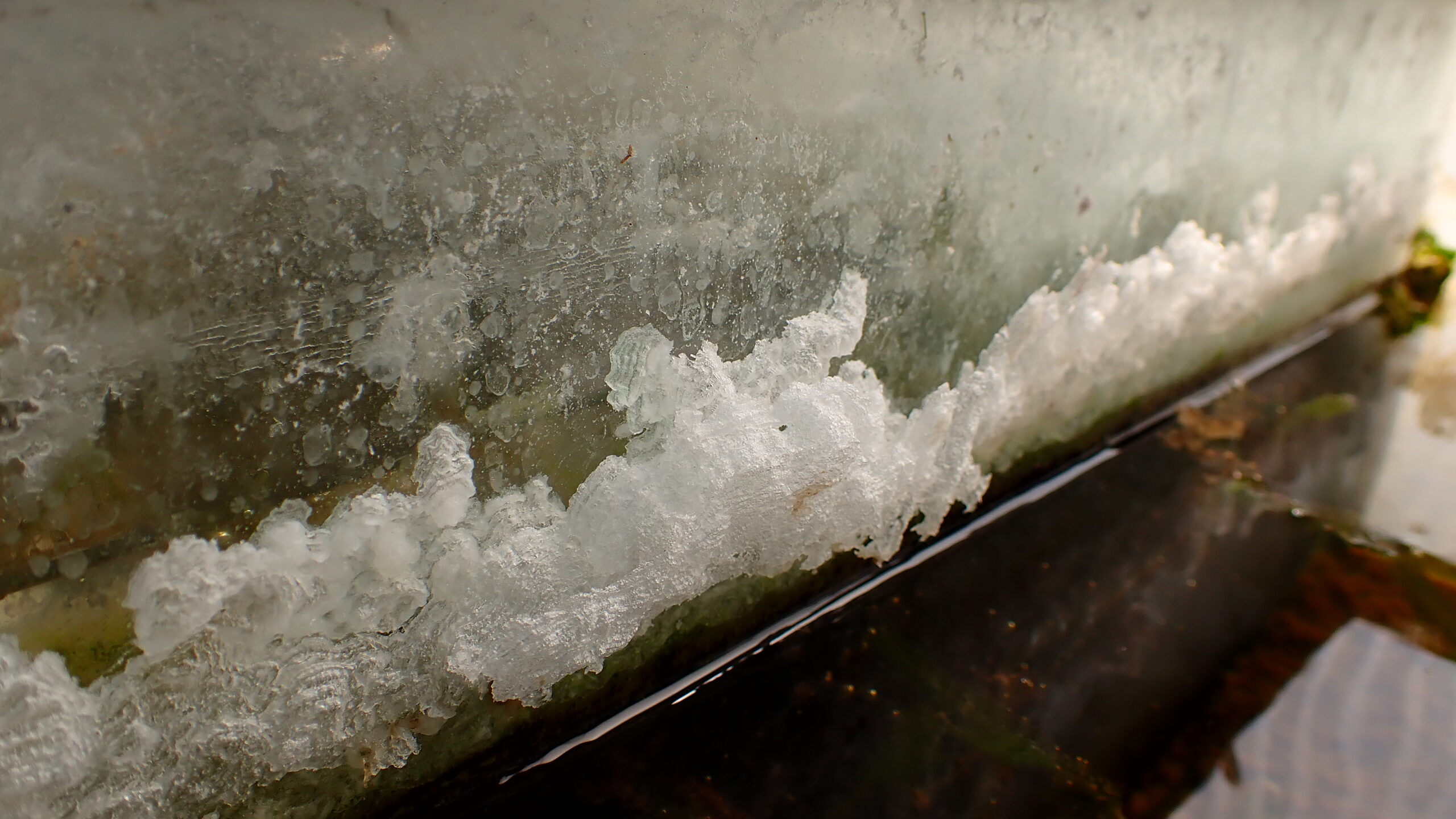

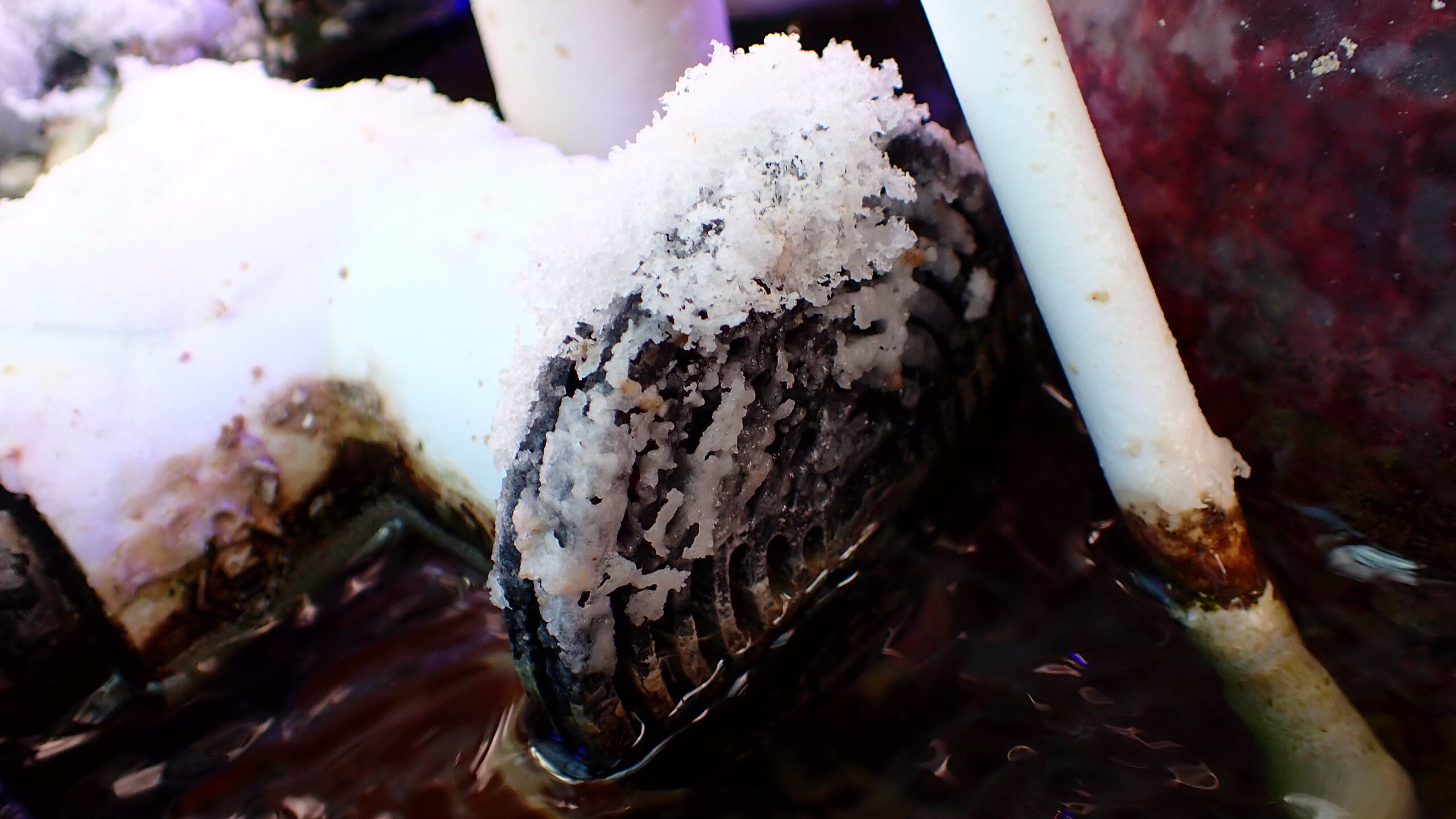
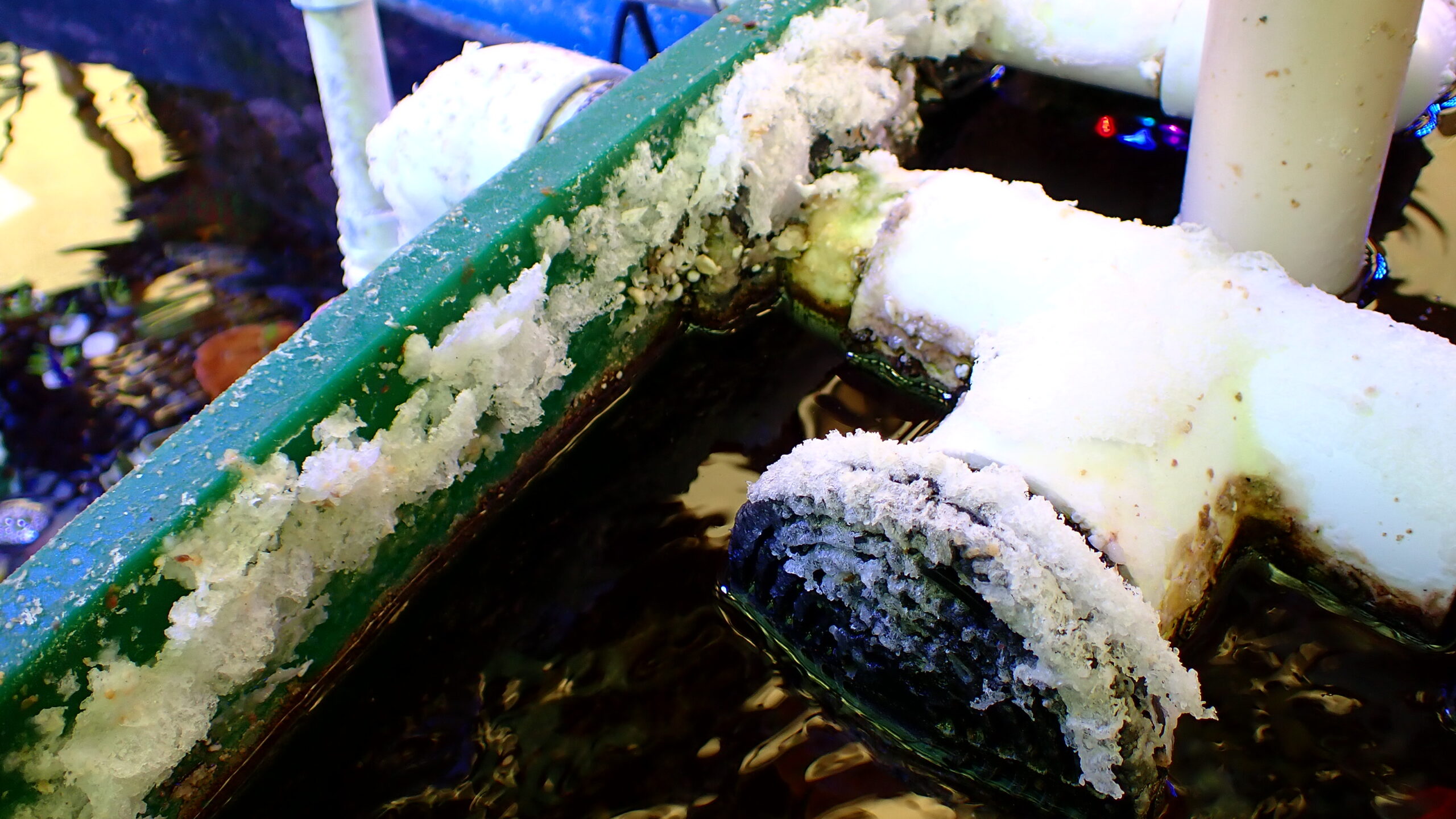
I hope this article served as a good baseline for best practices involving electricity and your aquarium. As for me, I upgraded the outlets in my office to GFCI’s. While not needed by code, my experience taught me that this is the best practice. Remember you can never be too safe around electricity!
References
- Using ground probes in aquariums. (2019, February 14). REEF2REEF Saltwater and Reef Aquarium Forum. https://www.reef2reef.com/ams/using-ground-probes-in-aquariums.596/
- Chandler, N. (2021b, May 4). How does a GFCI outlet work? HowStuffWorks. https://home.howstuffworks.com/question117.htm
- Powers, Erin. Personal communication, May, 2024.
About the author
Kyle Woekel owns and operates Tampico Coral Farms, growing and shipping tens of thousands of coral to the U.S. He is a lifelong aquarist with close to 30 years as a hobbyist and 20+ years in the trade, including 15 years owning and operating an aquarium installation and maintenance business.


